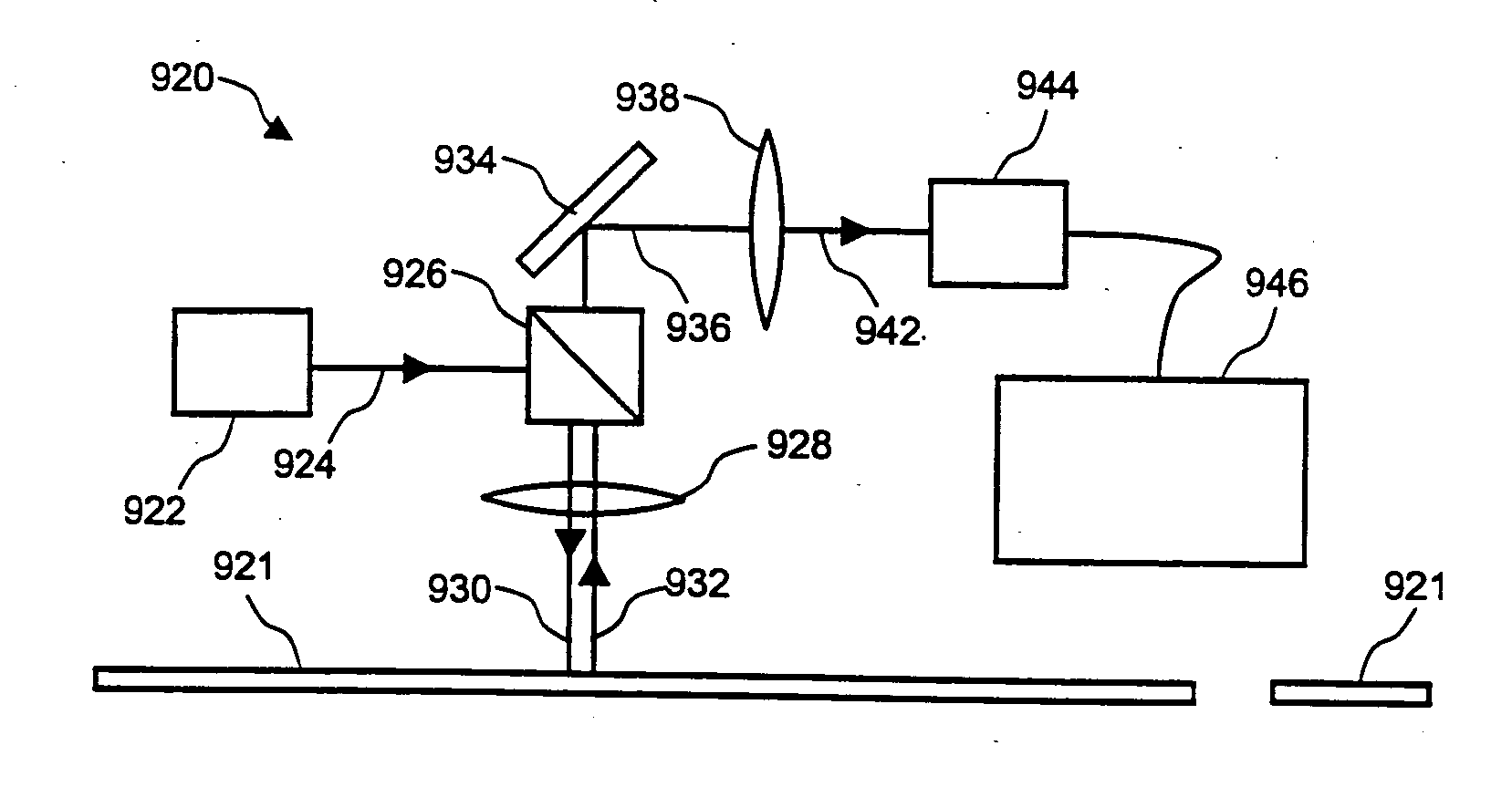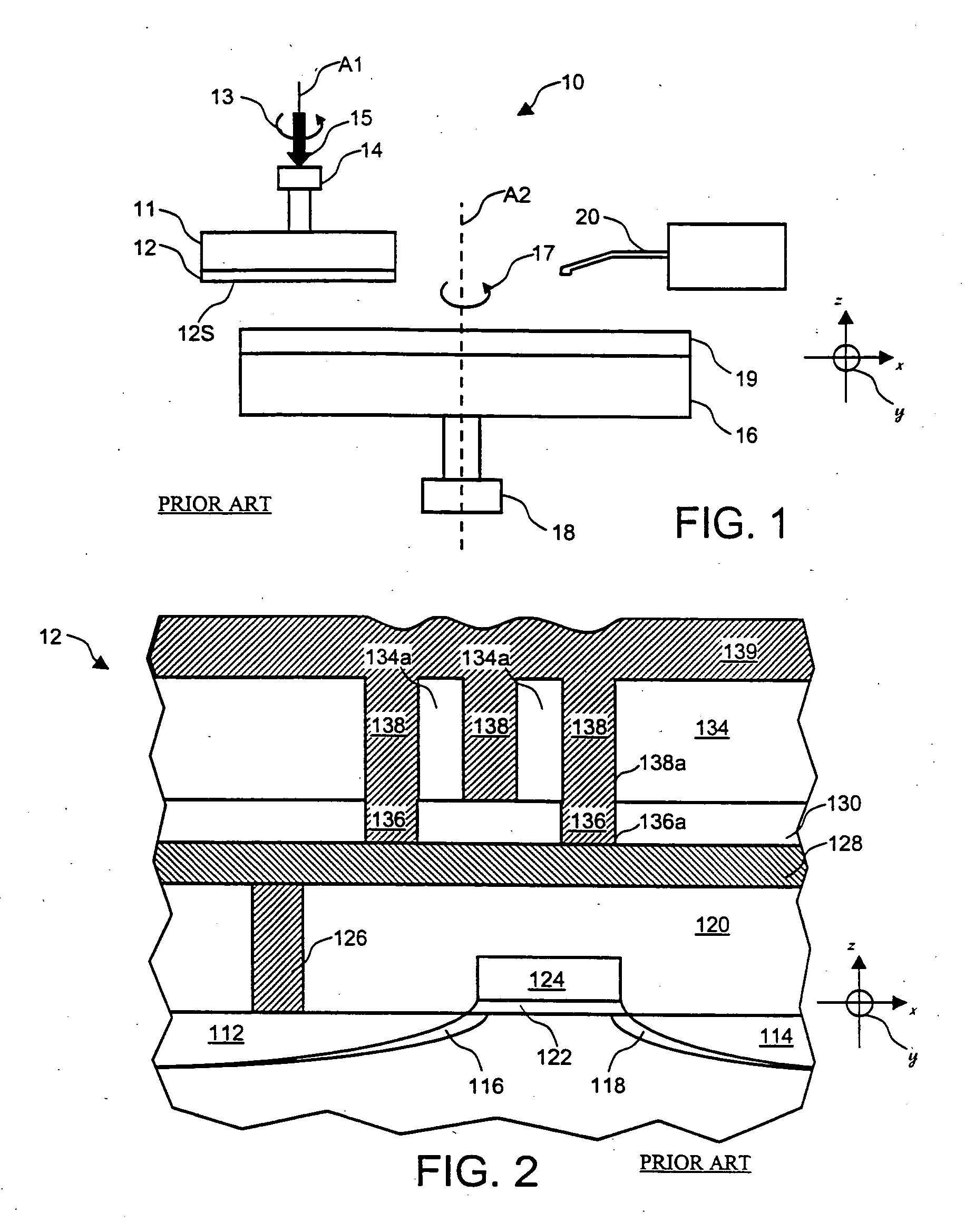Method of measuring meso-scale structures on wafers
- Summary
- Abstract
- Description
- Claims
- Application Information
AI Technical Summary
Benefits of technology
Problems solved by technology
Method used
Image
Examples
second embodiment
With reference to FIG. 13 and flow diagram 520, in the invention, the flow diagram 500 of FIG. 10 is embedded in flow diagram 520 routine 520 to measure at least one of the parameters in the model of step 500.
In step 522 of flow diagram 520, all the parameters needed to calculate the total reflectance are identified as either known or unknown. Parameters include the optical indices of all media that are illuminated, all significant geometric parameters, and the mixing parameters discussed above. The optical indices may be expressed as either functions of one or more parameters, as a table of values, or by some combination of the two methods. The precise form of the mixing parameters is chosen. Also the wavelengths to be considered are chosen.
In step 524, the values for all the known parameters are determined. These may be determined by measurements, experience, theoretical considerations, or any other means.
In step 526, estimated values are assigned to all the unknown parameter...
third embodiment
With reference to FIGS. 15a, 15b and 16, an example of the present invention that uses a collection of sites and a chain of algorithms to measure unknown wafer parameters of interest is now described. FIG. 16 shows the flow diagram for a more general procedure. With reference to FIGS. 15a and 15b, die 650 on the wafer contains two sites of interest, 652 and 654. These sites are regarded as a collection of sites, i.e., they are measured sequentially over spots 653 and 655, respectively, and then processed together by a chain of algorithms. As the term is used herein, a chain or collection of algorithms comprises a set of algorithms that are linked by passing parameters of one algorithm to another algorithm in the chain or collection. The parameter may become either a fixed value in the destination algorithm, or an initial estimate for that algorithm. Site 652 comprises a stack of uniform films, and site 654 is an array, as described above. In general, site 652 is easier to measure an...
PUM
| Property | Measurement | Unit |
|---|---|---|
| Structure | aaaaa | aaaaa |
| Reflection | aaaaa | aaaaa |
| Reflectance | aaaaa | aaaaa |
Abstract
Description
Claims
Application Information
 Login to View More
Login to View More - R&D
- Intellectual Property
- Life Sciences
- Materials
- Tech Scout
- Unparalleled Data Quality
- Higher Quality Content
- 60% Fewer Hallucinations
Browse by: Latest US Patents, China's latest patents, Technical Efficacy Thesaurus, Application Domain, Technology Topic, Popular Technical Reports.
© 2025 PatSnap. All rights reserved.Legal|Privacy policy|Modern Slavery Act Transparency Statement|Sitemap|About US| Contact US: help@patsnap.com



